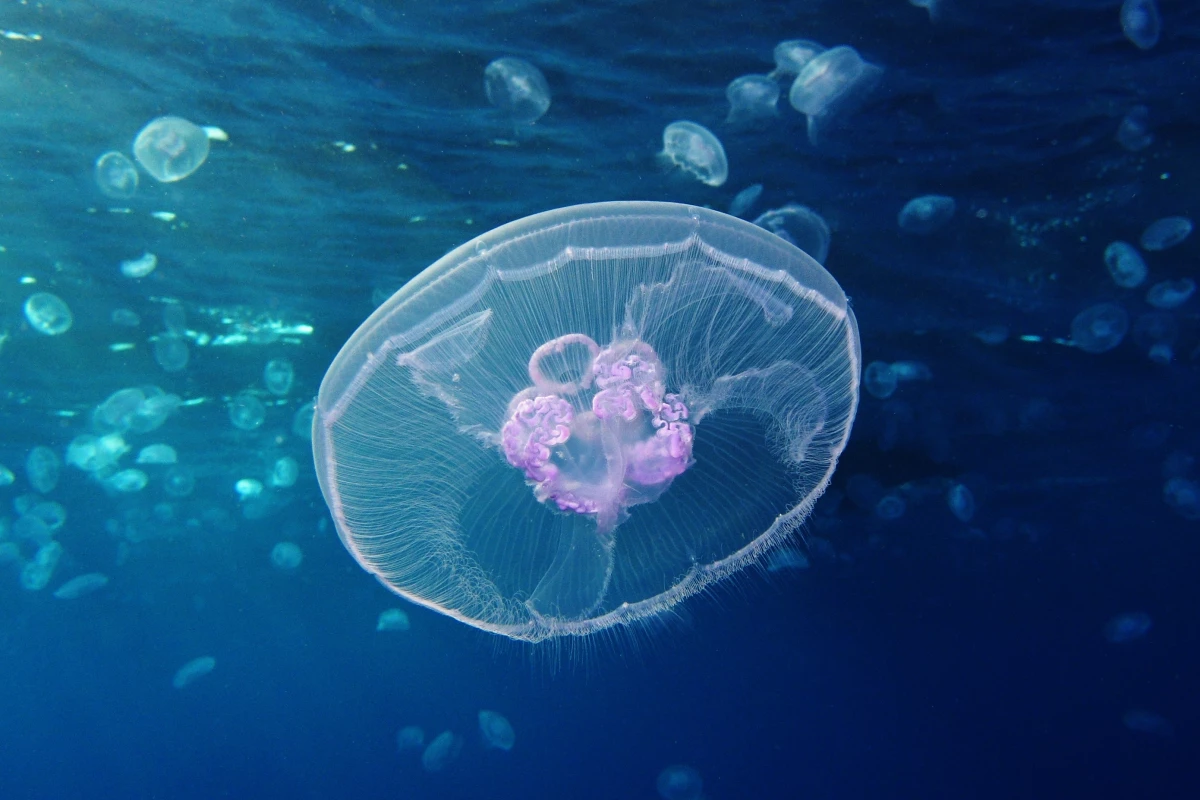When it comes to developing robots that can move efficiently through water, scientists regularly turn to creature’s like squid and jellyfish for inspiration, and a UK research team has just produced one that can swim with the best of them. The soft and flexible robot uses a novel propulsion method to move much like the most efficient swimmer found in nature, and carries a set of attributes its creators say are well suited to operating near fragile and sensitive underwater environments.
The robot was created by a team of engineers from the University of Southampton and the University of Edinburgh, who sought inspiration from what is considered nature’s most efficient swimmer, Aurelia aurita, or moon jellyfish. The robot mimics the locomotion of this marine creature with the help of what the engineers call a “propulsive bell.”
This consists of a rubber membrane that encases a set of eight 3D-printed, flexible ribs, with a small piston positioned at the robot’s upper body. This piston punches the propulsive bell which causes it to expand and then spring back to its original shape repeatedly, producing jets of fluid that propel the robot through the water.
This imitates the swimming technique used by jellyfish and when the bell is struck at just the right frequency, the robot was able to swim at a rate of one body length per second and equal the efficiency of the Aurelia aurita. This phenomenon is known as resonance and refers to the large vibrations that result from the application of force at just the right frequency, much like pushing a child on a swing.

According to the scientists, this is the first time resonance has been demonstrated as a form of propulsion in a submersible, and the technique enables the robot to swim 10 to 50 times more efficiently than comparable underwater robots driven by propellors.
"Previous attempts to propel underwater robots with jetting systems have involved pushing water through a rigid tube but we wanted to take it further so we brought in elasticity and resonance to mimic biology," says co-author Thierry Bujard. "I was really surprised by the results, I was confident that the design would work but the efficiency of the robot was much greater than I expected."
Because the robot features a soft and flexible exterior, the scientists believe it could one day prove useful in exploring fragile environments, such as coral reefs, archaeological sites or areas frequented by human swimmers. The team will now turn its attention to fitting out the robot with the tech needed for these kinds of applications.
"There are still many challenges and exciting possibilities to explore with soft underwater robotic technologies,” says Dr Gabriel Weymouth from the University of Southampton. “We are now looking to extend the concept behind this robot to a fully maneuverable and autonomous underwater vehicle capable of sensing and navigating its environment."
The research was published in the journal Science Robotics, while the video below contains raw footage of the robot in action.
Source: University of Southampton via EurekAlert




